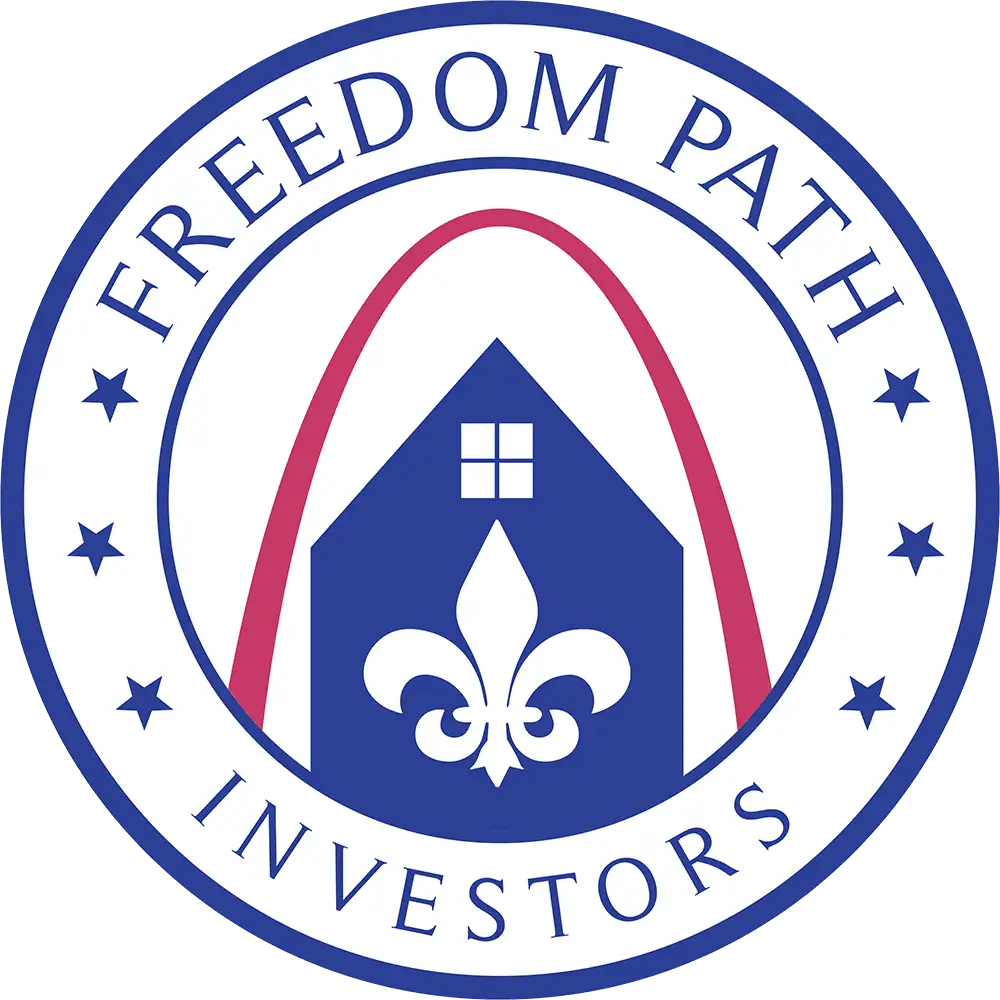Setting the right price for a rental property can feel overwhelming. Owners worry about leaving money on the table or scaring off buyers. Even small pricing mistakes can mean lost profits or a property that sits too long.
This uncertainty grows when the market shifts or when there are few comparable sales. Many sellers feel stuck, unsure how to balance their investment goals with what buyers will actually pay. A wrong move can cost both time and money.
Here’s the good news: You can price your rental property for sale accurately by using local data, rental income, and expert advice. This approach brings clarity and confidence to your decision. The right price attracts buyers and maximizes your return. This blog will walk you through every step to help you set the best price for your rental property.
Key Takeaways
- Compare recent sales and rental rates of similar local properties to determine a competitive and realistic price.
- Adjust for property condition, upgrades, and unique features to reflect true market value.
- Calculate net operating income and use the cap rate to assess investment value for potential buyers.
- Factor in occupancy rates, lease terms, and tenant stability to highlight income reliability.
- Consult with real estate professionals for up-to-date market analysis and expert pricing guidance.
Understanding the Local Real Estate Market
To set a good price for your rental property, you must first study the local real estate market. Local rental rates give you a clear idea of what tenants are paying now. If you match these rates, you can attract more renters.
You should compare your property to others with similar features and locations. Check the vacancy rates in your area; high vacancies may mean you need to lower your price. If there are few available rentals, you might be able to charge more. When selling a property, it’s also helpful to understand capital gains tax rules so you can anticipate your potential tax liability.
If employment rates or the population are rising, rental demand will likely increase. Seasonal changes can also affect how many people are looking to rent. When you use this information, you can keep your property full and reduce tenant turnover.
If your rental property is under a land contract agreement, it’s important to review the contract terms for any selling restrictions before setting your price.
Analyzing Comparable Sales
Analyzing comparable sales helps you set the right price for your rental property. Comps are similar homes that have recently sold nearby. If you study these sales, you can find a fair value for your property. Reviewing recent sales of similar homes helps determine a fair and competitive price for your rental property.
You should look for homes that match yours in size, age, and features. Garden landscaping and interior decor can affect prices. If your property has upgrades, it may be worth more. When reviewing comps, keep in mind that major issues during inspection can significantly affect a property’s final sale price.
Sales data shows how much buyers pay for certain features. If your property is close to parks or schools, this can add value. Always adjust your price if your home differs from the comps.
If you use this method, you can set a competitive price. A fair price helps you attract renters and avoid long vacancies. This approach gives you a strong starting point. For sellers who want to avoid repairs and sell houses as-is, understanding comparable sales is especially important to ensure you receive a fair cash offer.
Assessing Current Rental Income
To assess your current rental income, compare your rent to similar properties nearby. Look at the location, condition, and amenities. This helps you see if your income matches the market.
Check your lease terms for rent increases and lease length. Some tenants may pay less if their lease is old. If so, your rental income might be lower than what the market allows. You should also consider if your property might appeal to investors seeking as-is homes, which can affect both demand and pricing.
Consider what expenses you pay, like utilities, repairs, or property taxes. These costs reduce your net income from the property. Always keep your rental records clear and updated.
If your rent is much lower than similar homes, buyers may see less value in your property. Accurate rental income helps you set the right price. Proper documentation gives buyers and lenders confidence in your numbers.
When selling a rental, it’s important to highlight if you are offering the property as-is, since this can attract investors looking for a hassle-free purchase and impact your pricing strategy.
Calculating Capitalization Rate
Calculating the capitalization rate tells you how much profit your property makes compared to its value. This rate helps you see if your rental yield is strong or weak. It also lets you compare your property to others in the market. If you want a stress-free selling experience and a fast, all-cash offer, understanding the cap rate is especially helpful when working with local buyers who purchase homes as-is.
To find the cap rate, first calculate your net operating income (NOI). Subtract all operating expenses from your total rental income. If you know the market value, you can move to the next step.
Divide your NOI by the property’s market value. Multiply the result by 100 to get a percentage. A higher cap rate means a better rental return for the price you paid. If you want to avoid real estate agent fees and keep more of your profits when selling, understanding the cap rate can also help you negotiate a fair cash offer.
Evaluating Property Condition and Upgrades
You need to systematically assess recent renovations and identify any outstanding maintenance needs to set an accurate rental price. Properties with modern upgrades and minimal deferred maintenance typically command higher rents and attract quality tenants. Quantifying these factors lets you benchmark your property against local competitors and justify your pricing decisions.
If your property has foundation issues or signs of structural problems, you may face a lower valuation and a smaller pool of interested buyers. If you’re considering selling your rental, remember that buyers will also evaluate the current property condition to determine fair cash offers and overall marketability.
Assessing Recent Renovations
Recent renovations can increase a property’s rental value, but some upgrades are more effective than others. Upgrades that improve appearance or function usually give the best returns. Property owners should focus on changes that matter most to renters.
Landscaping improvements like neat lawns and fresh walkways can raise the property’s value by up to 12%. Fresh paint, new lights, and modern fixtures make living spaces more appealing. If you want higher rent, consider simple updates that help renters picture themselves living there.
Remodeled kitchens and bathrooms often recover 60-80% of their investment cost. New appliances or countertops in these areas are especially valuable. If you want the best return, focus on these high-traffic spaces.
Identifying Maintenance Needs
Regular maintenance is essential for keeping your property in good condition. It can increase rental prices and improve tenant satisfaction. You should start by inspecting major systems like HVAC, plumbing, and electrical.
Visible details also matter. Check paint, floors, and fixtures for any needed repairs. Well-maintained properties can earn higher rents than those left neglected.
Landscaping is important for curb appeal. Attractive, low-maintenance yards can help justify higher rental prices. Pest control should be a priority since infestations lower property value.
If you keep records of repairs and maintenance, buyers will trust your property more. Provide schedules and receipts for all upgrades. If you address these needs early, you can boost your property’s market value.
Considering Occupancy and Tenant Stability
You need to weigh how long-term leases boost income stability and reduce vacancy risk. High vacancy rates can erode your property’s value and cut into profits, while frequent tenant turnover increases costs for marketing and maintenance. Analyzing these factors helps you set a price that attracts reliable tenants and maximizes your returns.
Additionally, working with local real estate market experts can provide insights into tenant expectations and pricing strategies specific to St. Charles County, ensuring your property is positioned competitively. If you want to avoid costly repairs and lengthy closing processes, consider the benefits of selling as-is, which can save both time and money while simplifying your sale.
Impact of Long-Term Leases
The duration of a lease can strongly affect rental property performance. Longer leases often lead to more stable and predictable income. They also help reduce the risk of vacancy.
If tenants stay longer, owners save money on finding and preparing for new tenants. Lower turnover means less spending on advertising, cleaning, and repairs between renters. This can increase the property’s profit over time.
Long-term leases may also improve relationships between landlords and tenants. Good relationships can lead to fewer conflicts and a better living environment. If buyers prefer less risk, a stable lease can make the property more attractive to them.
Vacancy Rates and Value
Vacancy rates are important when judging a property’s value. Low vacancy rates show steady rental income and make a property more appealing. High occupancy means less risk of losing income.
You should always compare a property’s vacancy rates to the area’s average. If your property does better than others, you can ask for a higher price. If it has higher vacancy, the value may need to be lower.
Presenting strong occupancy data can help you prove the property is a safe investment. This information gives you an advantage when negotiating a sale. Buyers are more likely to pay more for stable rental income.
Tenant Turnover Implications
Tenant turnover affects your property’s expenses and future value. High turnover leads to more costs and less profit. Stable tenants help you earn more and increase your property’s worth.
Turnover means you pay for cleaning, repairs, and changing locks after each move. You may also spend money and time to find new tenants. If turnover is high, expect to lose income when units sit empty.
Landlords might face issues with security deposits, which can delay cash flow. If tenants stay longer, you avoid these problems. Tracking how often tenants move can help you set the right rent and attract buyers.
If you show strong tenant retention, buyers may pay more for your property. If turnover is low, it signals steady income. This data supports your pricing and appeals to investors seeking stable returns.
Factoring in Lease Terms and Restrictions
Lease terms and restrictions can greatly affect a rental property’s value. If a lease has strict or unusual rules, it can make the property less attractive. Investors often prefer leases that are simple and flexible. Choosing a property with no real estate agent fees can also make your investment more appealing to buyers and help maximize your net profit.
Long leases with low rents may lower your property’s price. Market-rate rents and fewer restrictions usually lead to higher values. If you want better returns, choose leases that allow for rent increases and easy renewals.
Rules about pets or subletting can limit tenant options. If a property is hard to rent, its value may drop. Properties with fewer rules attract more tenants and can sell for more.
If you review all lease clauses, you will better understand future income. Important clauses include termination, renewal, and rent increases. If you consider these factors, you can set a fair asking price.
If there are multiple owners on the deed, make sure all co-owners agree to the sale and understand how the lease terms could impact the property’s marketability.
Reviewing Operating Expenses

To price your rental accurately, you need to identify all recurring operating expense categories, such as property taxes, insurance, maintenance, and utilities. Quantify each expense and calculate precise annual totals using historical data or reliable estimates. This data-driven approach ensures your pricing strategy covers costs and protects your profit margin. When evaluating your expenses, consider the benefits of zero fees or commissions to maximize your net proceeds when selling your property.
Identifying Recurring Expense Categories
Recurring expense categories are regular costs you must pay to keep your rental property running. Identifying these costs helps you know how much profit you make. You should always list these expenses before setting a sale price.
Pet-friendly policies can increase cleaning, maintenance, and insurance expenses. If you hire a property manager, expect to pay 8% to 12% of the monthly rent. This fee is a recurring cost that lowers your income.
Maintenance and repairs include regular upkeep, landscaping, and emergency fixes. Insurance premiums and property taxes are unavoidable yearly costs. If you belong to a homeowners’ association, you may pay extra fees.
Utilities and services are often split between you and the tenant. Sometimes, you must pay for water, trash removal, or other services. Carefully track all these expenses for accurate pricing.
Calculating Accurate Annual Totals
To find your property’s true yearly costs, add up all recurring expenses for the year. Use invoices, receipts, and statements for each cost, like utilities, taxes, insurance, and maintenance. This sum gives you accurate annual totals.
If you notice seasonal or one-time spikes, check if they affect yearly averages. Rent control or zoning laws may also limit rent increases or property use. These limits can change your expenses and income.
Accurate annual totals help you estimate net income and set a fair sale price. Buyers trust your numbers if they see clear, precise data. Good records also help you explain and support your asking price.
Accounting for Potential Appreciation
Property appreciation can increase your total profit over time. If you focus only on rental income, you may miss future gains. You should always consider how much the property’s value could grow.
Local trends can help you predict appreciation. If the area adds new transit or allows more development, values may rise. Improved neighborhoods often see higher property prices.
Check historical appreciation rates in your area. Look at planned infrastructure projects that might make the property more attractive. If the local population and job market are growing, future rental demand may also increase.
Weighing Tax Implications and Capital Gains
You need to factor capital gains tax into your pricing strategy, as it can significantly affect your net proceeds when you sell. Accurate calculation of potential tax liability, based on holding period and profit, helps you set realistic long-term goals. If you want to defer taxes, consider a 1031 exchange to reinvest proceeds into another rental property.
Calculating Capital Gains Tax
Selling your rental property can increase your tax bill due to capital gains tax. You must calculate this tax to know your profit. This helps you plan your finances better.
Start by finding your cost basis. This includes your purchase price, closing costs, and any improvements made to the property. Subtract your total cost basis from your sale price to get your capital gain.
If you spent money on upgrades, add those costs to your basis. This will lower your taxable gain when you sell. Legal fees and other buying costs also count.
Depreciation claimed during ownership must be reported. The IRS taxes this amount separately as depreciation recapture. Remember to include it in your calculations.
If you owned the property for over a year, you may pay a lower tax rate. Short-term ownership usually means higher tax rates apply. Always check how long you held the property.
Utilizing 1031 Exchange
A 1031 exchange allows you to defer capital gains taxes when selling a rental property. You must reinvest the sale proceeds into another similar property. This strategy helps you keep more money for your next investment.
Properties with luxury upgrades or historic value often have higher prices. These types of properties can be good choices for a 1031 exchange. If you choose such properties, you might increase your returns.
The IRS requires the new property to be of equal or greater value and for similar use. You must also complete the exchange within a set timeline. If you meet these rules, you can delay paying taxes and grow your portfolio.
Always check your tax situation before making a decision. If you are unsure, consider talking to a tax professional. This can help you make the best choice for your investments.
Collaborating With Real Estate Professionals
Collaborating with real estate professionals gives you access to current market information and expert pricing advice. These experts help you understand local trends and set the best price for your rental. If you want reliable guidance, consider working with an agent.
Agents use real-time data to compare similar properties in your area. This helps you avoid pricing your rental too high or too low. They make sure your price matches current market conditions.
A real estate professional can also help with lease negotiations and property disclosures. If you want to reduce legal risks, their advice is valuable. They can guide you through each step of the process.
Professionals develop pricing strategies tailored to your property. This attracts serious renters and helps you get the best return. If you want to maximize profit, their expertise is important.
Adjusting for Unique Property Features
Unique features can raise your property’s rental value. Special amenities, like luxury kitchens or smart systems, often allow higher prices. These features may set your property apart from similar listings.
Properties with pools, upgraded appliances, or unique history can rent for 10–20% more. If your home has historical value, check recent sales of similar homes. Location and property condition should also guide your price adjustments.
Niche features like solar panels or wine cellars can attract specific renters. Some renters may pay extra for these amenities. Always use local market data to help set your rental price.
Gauging Buyer Demand and Market Timing
Rental prices change based on supply and demand. If you know when buyers are most interested, you can earn more from your property. Watch the market closely to decide the best time to list your rental.
Study local market cycles and compare recent sales. Check the number of available rentals and note any patterns in demand. If inventory is low or it is peak season, you may see higher interest.
Review lease restrictions and pet policies on similar rentals. Flexible rules can attract more potential renters. Stricter policies might limit your buyer pool.
You should also track seasonal trends in your area. Monitor listing views and the number of inquiries you receive. If online interest increases, it could be a good time to list.
Setting a Competitive Asking Price
To set a competitive asking price, compare your rental to similar properties in your area. Check recent sales, rent prices, and occupancy rates. This helps you find a fair and realistic price.
Consider your unit’s unique features when setting the price. If your property has upgrades or extra amenities, you can ask for a bit more. Use simple price points, like $299,000 instead of $300,000, to attract more interest.
If you price a little above market value, you allow room for negotiation. However, overpricing can make buyers lose interest quickly. Always watch the market and adjust your price if conditions change.
Conclusion
If you want to sell your rental property, setting the right price is important. A fair price attracts serious buyers and increases your chances of a quick sale. If you review local sales and rental income, you can find the best value for your property.
If you are unsure about the process, you may want to get professional advice. Some sellers prefer a fast and simple solution. If you need to sell quickly, we buy houses for cash and can make the process easy.
If you are ready to move forward, we encourage you to contact us. At Freedom Path Investors, we are here to help you sell your rental property. Reach out today to learn more about our cash offers.








